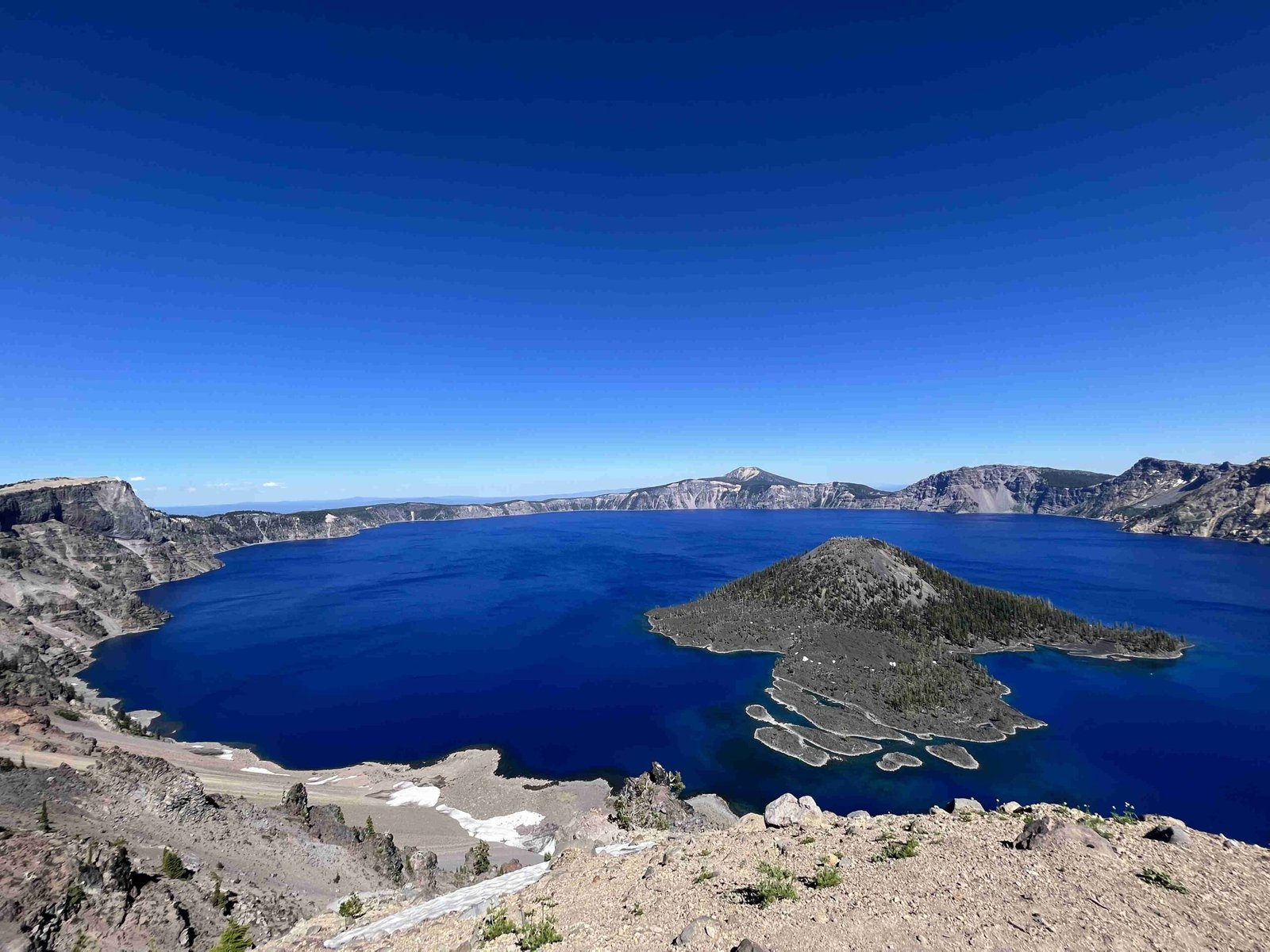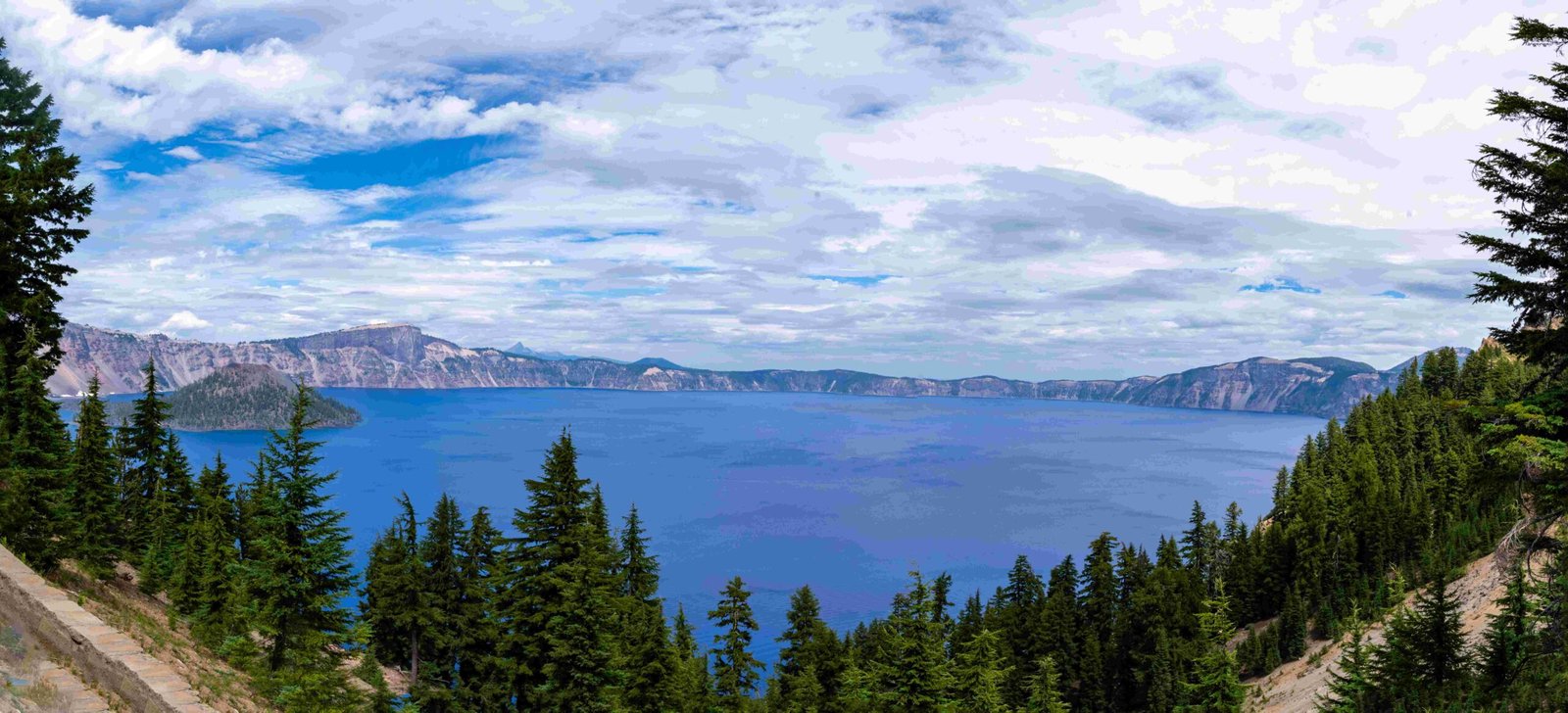The Dutton Creek Trail at Crater Lake National Park is a moderate 2.5-mile out-and-back hike that offers a unique perspective of the park’s diverse ecosystems. Starting at 7,123 feet elevation, the trail descends through old-growth mountain hemlock forests, crosses several streams, and ends at a junction with the Pacific Crest Trail. With an elevation change of 1,014 feet, this trail provides hikers with a challenging yet rewarding experience, showcasing the natural beauty of Crater Lake’s surrounding landscape.
What Are the Key Features of Dutton Creek Trail?

Dutton Creek Trail boasts several distinctive features that make it a must-visit for hikers exploring Crater Lake National Park:
- Trail Length: 2.5 miles (out-and-back)
- Elevation Change: 1,014 feet
- Starting Elevation: 7,123 feet (2,171 meters)
- Ending Elevation: 6,109 feet (1,862 meters)
- Notable Landmarks:
- Multiple stream crossings along Dutton Creek
- Small tributary and camping area at 1.25 miles
- Junction with Pacific Crest Trail at the end
The trail’s varied terrain and natural features provide hikers with a diverse and engaging experience throughout their journey.
How Challenging is the Dutton Creek Trail Hike?

The Dutton Creek Trail is classified as a moderate hike, suitable for strong beginners and experienced hikers alike. Here’s what you need to know about the trail’s difficulty:
- Overall Difficulty: Moderate
- Technical Sections: Steepest portion in the first 1.25 miles
- Average Hiking Time: Approximately 2 hours and 22 minutes
- Skill Level Recommendation: Prepared for moderately challenging terrain
Hikers should be ready for:
1. Steep sections, particularly at the beginning
2. Multiple stream crossings
3. Varied terrain, including nearly flat sections
What Scenic Highlights Can Hikers Expect on Dutton Creek Trail?
Dutton Creek Trail offers a range of scenic highlights that showcase the natural beauty of Crater Lake National Park:
- Forest Ecosystems:
- Old mountain hemlock forest in the upper section
- Open stand of lodgepole pine in the lower section
-
Intermixed open grassy meadows near the bottom
-
Geological Features:
- Pretty cleft in the hillside
-
High-elevation mountain stream along Dutton Creek
-
Viewpoints:
- Scenic vistas of surrounding mountains and forests
- No distinct viewpoint at the turnaround, but continuous scenic beauty
While the trail doesn’t offer direct views of Crater Lake, it provides a unique perspective on the park’s diverse landscapes and ecosystems.
How Does Dutton Creek Trail Connect to Other Trails?
Dutton Creek Trail serves as a connector to one of the most famous long-distance hiking trails in the United States:
- Pacific Crest Trail (PCT) Junction:
- Located at the end of Dutton Creek Trail
- Approximately 2.5 miles from the trailhead
- Situated in a wet and flat area
This connection offers hikers the opportunity to extend their journey or explore a small section of the renowned PCT.
What Should Hikers Prepare for the Dutton Creek Trail?
To ensure a safe and enjoyable hike on the Dutton Creek Trail, hikers should come prepared with:
- Proper Footwear: Sturdy hiking boots with good traction
- Water: At least 2 liters per person
- Snacks: High-energy foods for the journey
- Navigation: Trail map and compass (or GPS device)
- First Aid Kit: Basic supplies for emergencies
- Sun Protection: Sunscreen, hat, and sunglasses
- Layers: Weather-appropriate clothing for changing conditions
- Insect Repellent: To ward off mosquitoes and other bugs
When is the Best Time to Hike Dutton Creek Trail?
The optimal time to hike Dutton Creek Trail depends on several factors:
| Season | Trail Conditions | Advantages | Disadvantages |
|---|---|---|---|
| Summer | Generally clear and dry | Warm weather, long daylight hours | Potential crowds, mosquitoes |
| Fall | Variable, possible early snow | Beautiful foliage, fewer crowds | Cooler temperatures, shorter days |
| Spring | Snow possible, wet conditions | Wildflowers, flowing streams | Muddy trails, lingering snow |
| Winter | Snow-covered, difficult access | Solitude, winter scenery | Requires winter hiking skills and equipment |
For most hikers, late summer to early fall offers the best combination of favorable weather and trail conditions.
How Does Dutton Creek Trail Contribute to Crater Lake’s Ecosystem?
Dutton Creek Trail plays a vital role in the Crater Lake ecosystem:
- Watershed Protection: The trail follows Dutton Creek, helping to preserve this important water source.
- Habitat Diversity: Traverses multiple forest types, supporting various plant and animal species.
- Educational Opportunity: Allows visitors to experience different ecosystems within a short distance.
- Controlled Access: Provides a designated path for humans, minimizing impact on surrounding areas.
By hiking responsibly on Dutton Creek Trail, visitors contribute to the preservation of Crater Lake National Park’s unique environment.
The Dutton Creek Trail at Crater Lake offers hikers a chance to explore the park’s diverse landscapes away from the crowds at the lake rim. With its moderate difficulty, scenic beauty, and connection to the Pacific Crest Trail, it’s a worthy addition to any Crater Lake itinerary for those seeking a more immersive forest experience.

